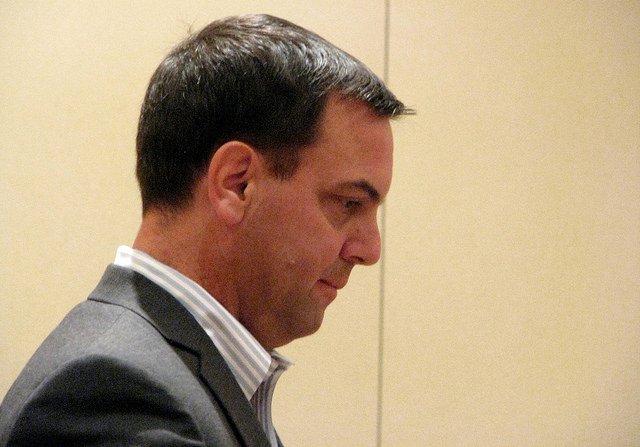In all of the coverage of the Ontario election and the new Wynne government, the media has completely overlooked one of the most important stories of them all.
What people don’t realize is that the labour movement came together in an unprecedented way to defeat Progressive Conservative party leader Tim Hudak, and kept the U.S. anti-union movement out of Canada.
Just think about it. Had Hudak won the election, Ontario would have suffered the wholesale slashing of 100,000 public sector jobs, which would have triggered 67,000 more job losses in the private sector. There would have been a massive tax-cut give-away to big corporations, which would have forced more cuts to social programs and worsened inequality across Ontario. And the labour movement would have faced Wisconsin-style attacks aimed at devastating the rights of workers.
But there was none of this, because we prevented Hudak from winning the election in June.
Eighteen months ago Tim Hudak was promising to destroy the labour movement. We believed him.
I won’t ever forget the meeting where a woman who had lived in Wisconsin stood up and said we were right to take the threat seriously and to respond quickly. “Our unions did not react soon enough” when anti-union laws were first proposed there, she said. “And then it was too late.”
Hudak was working closely with U.S.-based anti-union Tea Party strategists, according to reports. They schemed to slash union funding and strip workers’ pensions. Union members worried Hudak was considering moves to bar workers from bargaining over pensions, health coverage, safety, sick leave or vacations. In Wisconsin, basically all that’s left for public sector workers to negotiate is base pay, and even that is limited.
Conservatives planned to end the decades-old rule called the Rand Formula, and offer union members the chance to stop paying their fair share of dues, which would, Hudak hoped, win him workers’ votes and drive their unions into bankruptcy.
Despite Hudak’s attempt to distance himself from these policies later, workers knew he was still determined to decimate the labour movement in Ontario if ever elected Premier.
The labour movement responded by coming together in a way that I have not seen in nearly 20 years. At the Ontario Federation of Labour convention last fall, member unions voted unanimously to go on the offensive.
I was asked repeatedly if labour would mount a campaign similar to the “Days of Action” we waged in the late 1990s against Mike Harris — another anti-labour premier. My response was: Let’s be more pro-active this time and defeat Hudak before he can take power.
The goal of our “Workers’ Rights” campaign was to drive down the number of union members who vote Conservative (yes, union members vote for all political parties, just like everybody else).
Through the winter we organized 16 filled-to-capacity interactive workshops across the province for 10,000 local labour leaders from 52 unions. We explained how Tim Hudak’s policies would hurt our rights, and trained an army of union members to deliver our message to their families and co-workers in thousands of workplaces.
The election was not of our choosing, but we were ready.
Our campaign was run from a “war room” at the OFL, where we received reports from field organizers and tracked polling results from 55 key ridings, which narrowed to a few dozen swing ridings as the political picture became clearer.
We used social media to reach our organizers. Traditional media reported on our research, which calculated the local impact of Hudak’s ill-conceived plan to cut 100,000 jobs, city by city.
Our affiliated unions mailed and telephoned their members; some raised money to pay for advertising. OFL activists were deployed to assist with key NDP campaigns in southwestern Ontario, downtown Toronto and Oshawa, and other affiliates urged their members to vote for NDP incumbents or the party best placed to prevent a Conservative victory in their local riding.
After first losing the election and then Hudak as party leader, some Conservatives blamed unions for their defeat. I agree with them. Their interim leader, Jim Wilson, concluded that the party needs to take a different tack, saying the Progressive Conservatives need to stop “attacking people.”
Now, the labour movement is dealing with the Liberal majority government, starting with its budget re-introduced this month. There is a lot worth supporting, but we will continue to resist austerity measures, especially harmful privatization and cuts to social programs.
Hudak’s Conservatives came very close to wiping-out unions in Ontario. Hudak led the polls for months, and almost every day of the election. But 500,000 more votes were cast on election day than back in 2011, and thanks largely to our campaign, they went to parties other than the Conservatives.
There are lessons for all of the parties in Ottawa, as the federal election approaches next year. Our politicized labour movement will be ready to defend the rights of workers, and now that we have stopped Hudak, Harper is next.
Sid Ryan is the President of the Ontario Labour Federation, representing a million members in Ontario.
Photo: flickr/Laurel L. Ruswwurm



